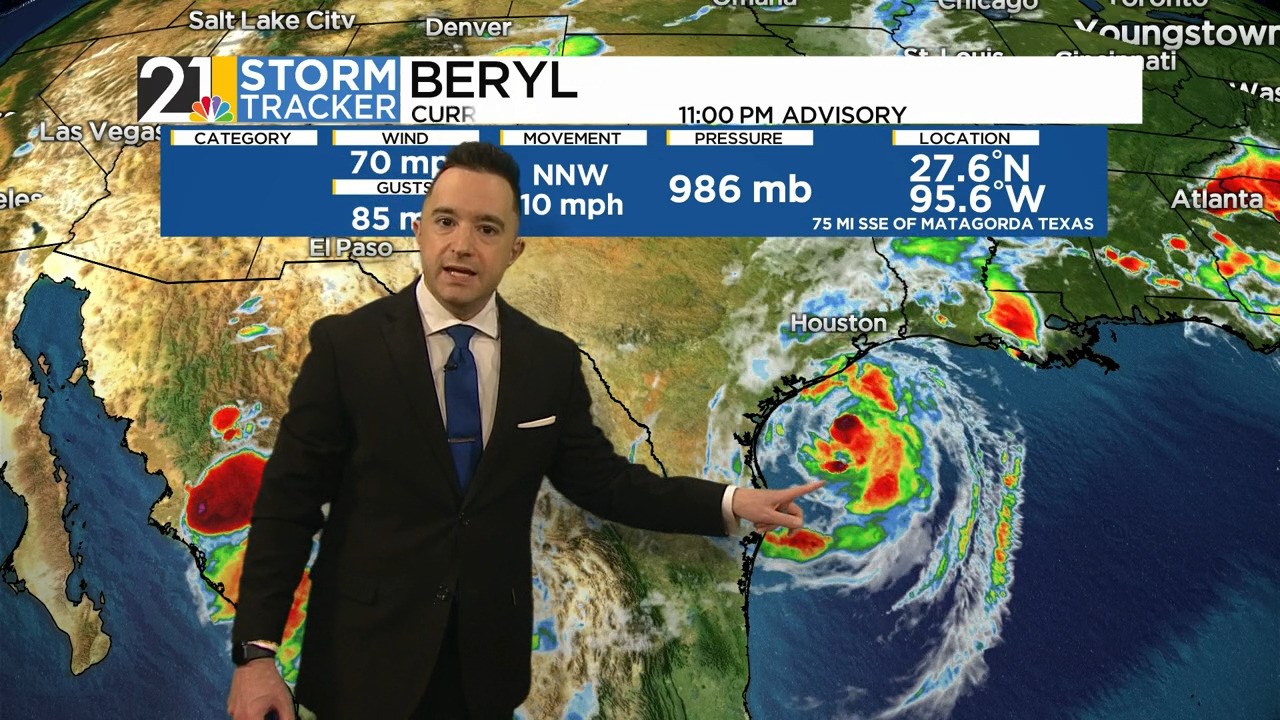Real-Time Tracking and Analysis

Storm tracker – Accurately tracking and analyzing storms in real-time is essential for effective forecasting and public safety. A comprehensive approach that leverages multiple data sources and technologies is crucial to capture the dynamic nature of storms.
Radar systems play a vital role in storm tracking. By emitting radio waves and analyzing the reflected signals, radar can determine the location, intensity, and movement of precipitation. Doppler radar, in particular, provides detailed information about wind speeds and directions within the storm, enabling meteorologists to identify areas of rotation and potential tornado development.
Satellite Imagery, Storm tracker
Satellite imagery offers a broader perspective on storm systems. Geostationary satellites provide continuous images of Earth’s atmosphere, allowing meteorologists to track the movement and evolution of storms over large areas. Polar-orbiting satellites, on the other hand, collect data on temperature, humidity, and wind speeds, providing valuable insights into the internal structure and dynamics of storms.
The storm tracker, a tireless sentinel of the skies, scans the horizon, its keen eye trained for signs of tempestuous fury. As the storm gathers strength, the tracker turns to WLWT weather , a trusted ally in the battle against nature’s wrath.
With real-time updates and expert analysis, WLWT weather provides the storm tracker with the insights it needs to stay one step ahead of the brewing storm.
Weather Balloons
Weather balloons are launched regularly to collect atmospheric data at various altitudes. These balloons carry instruments that measure temperature, humidity, pressure, and wind speed and direction. The data gathered from weather balloons helps meteorologists create vertical profiles of the atmosphere, which are essential for understanding the development and behavior of storms.
By combining data from radar, satellite imagery, and weather balloons, meteorologists can create detailed forecasts and track the progress of storms with increasing accuracy. However, it’s important to note that each technology has its limitations. Radar, for example, can be affected by terrain and distance, while satellite imagery can be obscured by clouds.
Storm trackers, the valiant guardians of weather’s wrath, traverse the skies with unwavering determination. Their gaze pierces through the ethereal tapestry, seeking out the subtle dance of air pressure and humidity that foretells of impending storms. As the tempestuous whirlwind gains momentum, the storm tracker’s focus shifts to its elusive counterpart, the tornado tracker.
This specialized instrument charts the path of the whirling vortex, its precision aiding in the evacuation of those in its perilous path. With the storm’s fury spent, the storm tracker resumes its vigilant watch, ever alert to the next atmospheric disturbance.
Despite these limitations, the integration of multiple data sources and the continuous advancements in storm tracking technologies are significantly improving our ability to predict and prepare for severe weather events.
Impact Assessment and Reporting

Storm trackers play a crucial role in assessing the potential impact of storms and providing early warnings to affected areas. They use a variety of data sources, including satellite imagery, radar data, and weather station reports, to track the movement and intensity of storms. This information is then used to create computer models that predict the storm’s path and potential impact.
Storm trackers also work closely with emergency response agencies to coordinate response efforts. They provide real-time updates on the storm’s location and intensity, and help to identify areas that are most at risk. This information is essential for emergency responders to make decisions about where to allocate resources and how to protect the public.
Types of Impacts
Storms can have a wide range of impacts, including:
- Damage to infrastructure: Storms can damage roads, bridges, power lines, and other infrastructure. This can disrupt transportation, communication, and other essential services.
- Property damage: Storms can damage homes, businesses, and other buildings. This can result in significant financial losses and displacement of residents.
- Natural ecosystem damage: Storms can damage forests, wetlands, and other natural ecosystems. This can disrupt the food chain and lead to the loss of biodiversity.
Assessment and Early Warnings
Storm trackers use a variety of data to assess the potential impact of storms. This data includes:
- Satellite imagery: Satellite imagery can be used to track the movement and intensity of storms. This information is used to create computer models that predict the storm’s path and potential impact.
- Radar data: Radar data can be used to track the precipitation associated with storms. This information is used to estimate the amount of rainfall or snowfall that is expected in a given area.
- Weather station reports: Weather station reports provide information on the wind speed, temperature, and humidity in a given area. This information is used to create computer models that predict the storm’s intensity and movement.
Storm trackers use this data to create computer models that predict the storm’s path and potential impact. These models are then used to issue early warnings to affected areas. Early warnings give people time to prepare for the storm and take steps to protect themselves and their property.
Public Education and Outreach: Storm Tracker

Storms are a natural phenomenon that can have devastating impacts on communities. Public education and outreach are essential for ensuring that people are aware of the risks associated with storms and know how to stay safe when they occur.
Storm trackers play a vital role in public education and outreach. They use a variety of platforms, including social media, websites, and television, to share information about storms and promote safety. For example, the National Weather Service uses social media to issue weather alerts and warnings, and to provide real-time updates on the progress of storms.
Community Resilience and Preparedness
Storm trackers also play a role in fostering community resilience and preparedness. By providing information about storms and promoting safety, they help communities to be better prepared for when storms do occur. For example, storm trackers can help communities to develop evacuation plans, identify safe shelters, and stockpile emergency supplies.